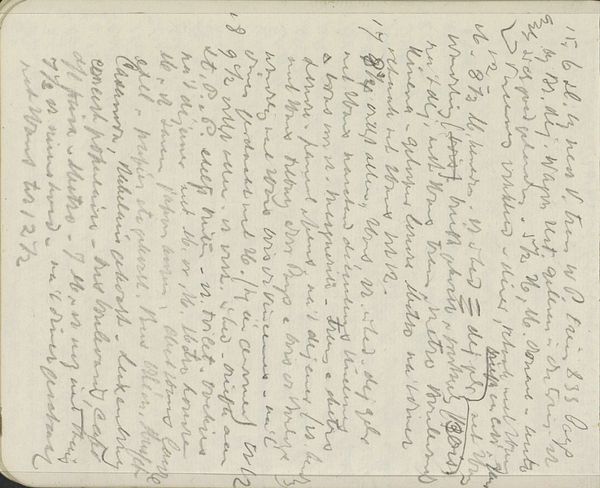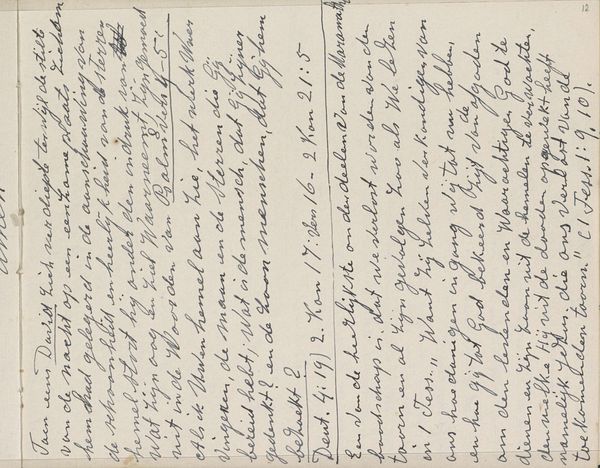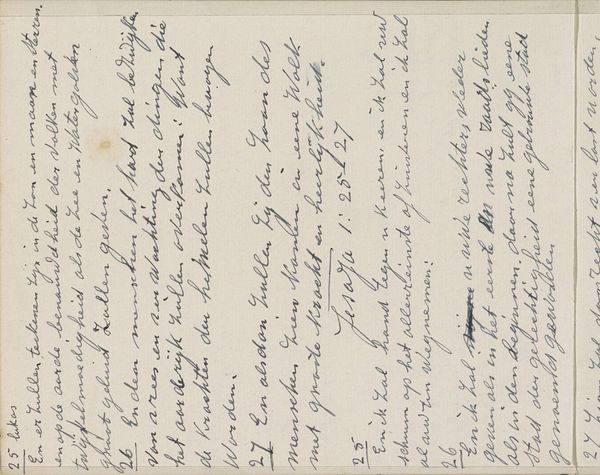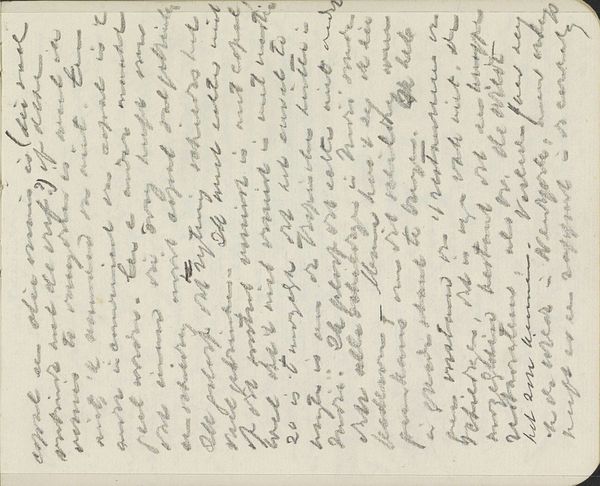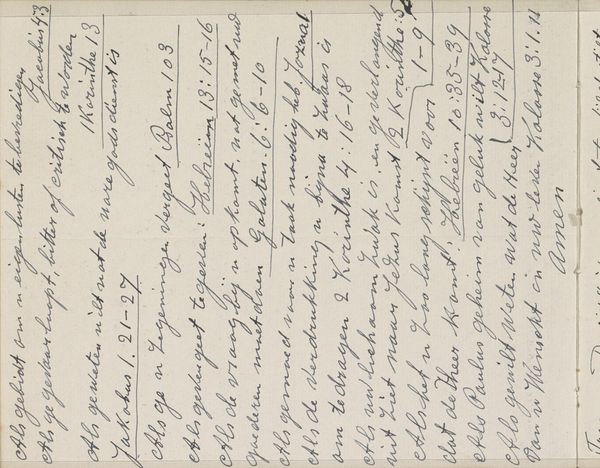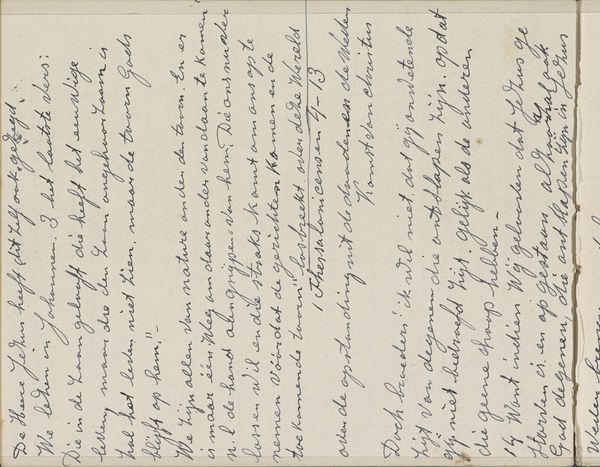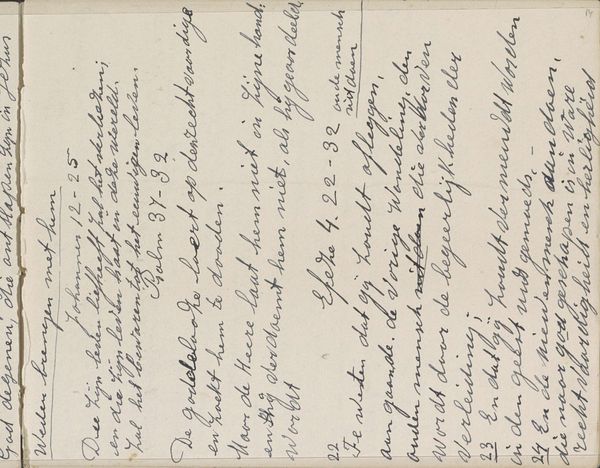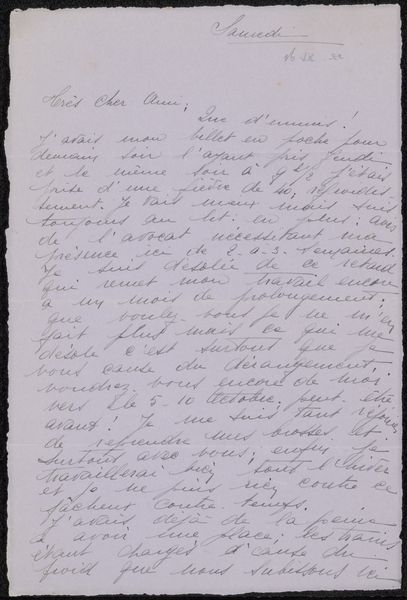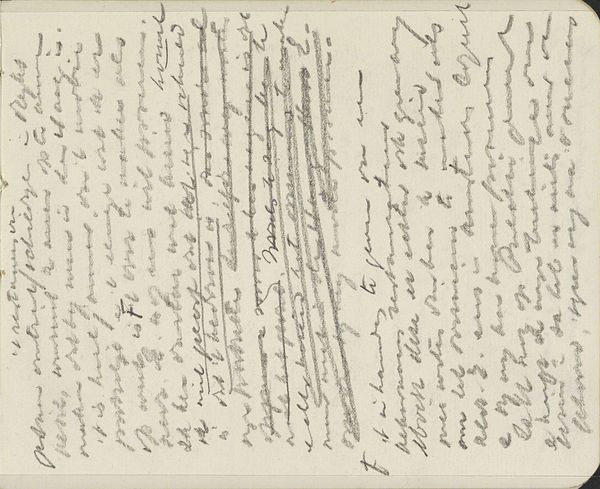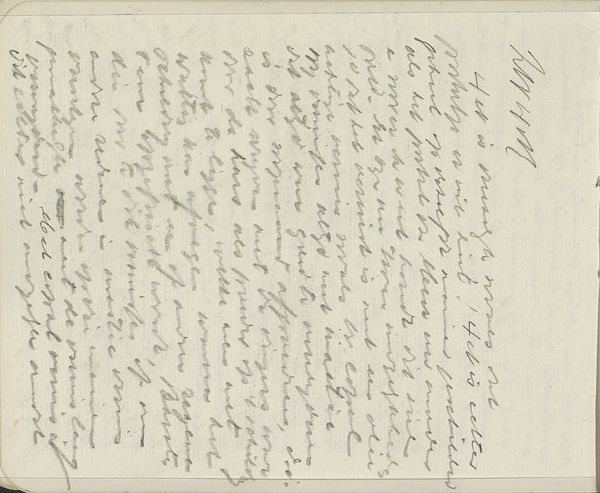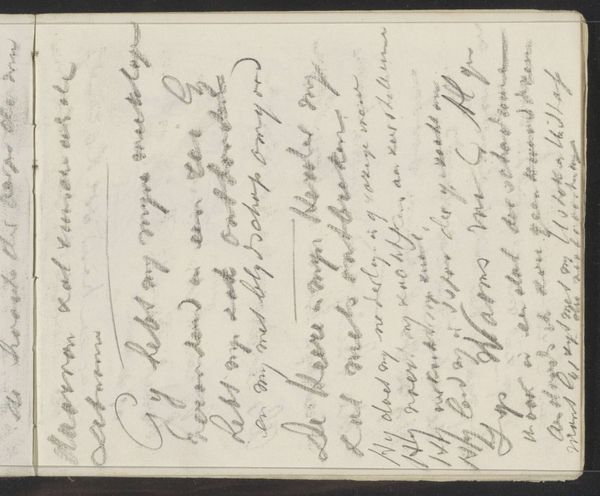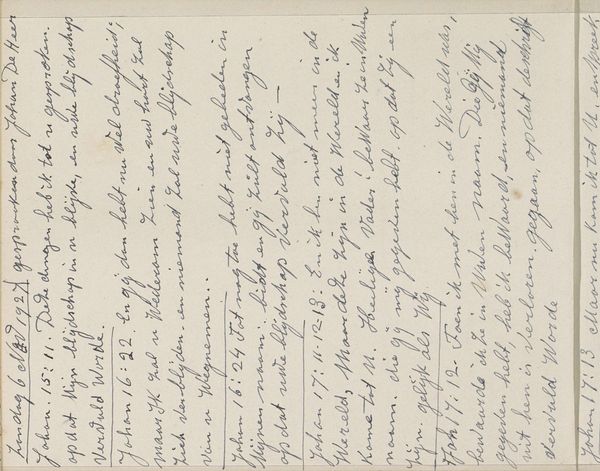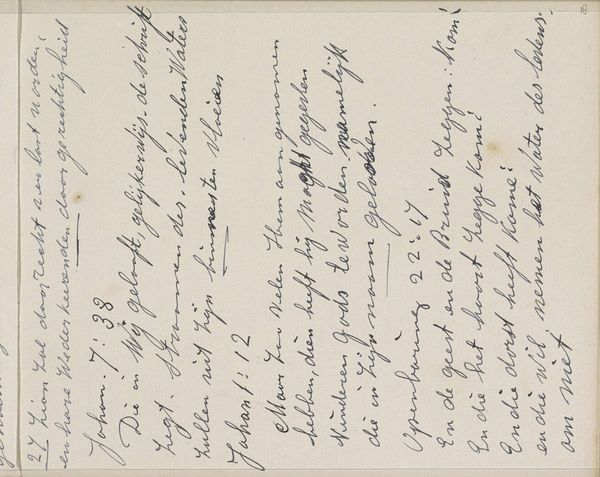
drawing, mixed-media, textile, paper, ink
#
drawing
#
mixed-media
#
hand written
#
hand-lettering
#
hand drawn type
#
hand lettering
#
textile
#
paper
#
personal sketchbook
#
ink
#
hand-drawn typeface
#
fading type
#
ink colored
#
sketchbook drawing
#
sketchbook art
#
calligraphy
Copyright: Rijks Museum: Open Domain
Curator: Ah, here's a page from Willem Witsen's sketchbook, "Annotaties," dating from around 1915 to 1921. It's a mixed-media work featuring ink on paper and possibly some textile elements. It's held here at the Rijksmuseum. Editor: My first impression? It’s overwhelmingly text! The dense, almost ethereal script seems to float across the page. There is a stark quality in its sparseness. Curator: Absolutely. Witsen was part of a group of Dutch artists deeply invested in recording their immediate surroundings and thoughts. Sketchbooks like these served as spaces for preliminary studies and spontaneous notations of daily experiences. It really reflects the artistic climate of the time, where intimacy and personal reflection were gaining traction. Editor: The rhythm and weight of each mark—it’s fascinating how he creates almost a texture solely through handwritten script. It feels less like a straightforward record and more like a field of visual information that challenges you to find meaning beyond the content itself. I like that the composition is mostly grayscale. Curator: I think you have hit on a significant point. The use of Dutch, the intimate notes—it all suggests this was a deeply personal undertaking, a glimpse into the artist’s thought process. It stands to reason the lack of fanfare points towards art existing in a very un-commodified context. Editor: Looking closely, some letters appear to fade. The density shifts as you look around the page. It suggests an organic unfolding of ideas over time rather than a static statement, and how these material imperfections underscore its temporal nature and intimate function. Curator: Indeed. Witsen, along with his contemporaries, played a critical role in bridging traditional artistic practices with more modern, subjective modes of expression. He elevated that creative process to become a subject in itself. Editor: A captivating snapshot into an artist’s mind then, laid bare through calligraphy and composition. I'm drawn to how the simplicity creates such a complex atmosphere of contemplation. Curator: Agreed. This humble sketchbook page offers insights not only into Witsen's artistic practice, but into a broader cultural shift that championed the artist's personal vision and introspection.
Comments
No comments
Be the first to comment and join the conversation on the ultimate creative platform.
